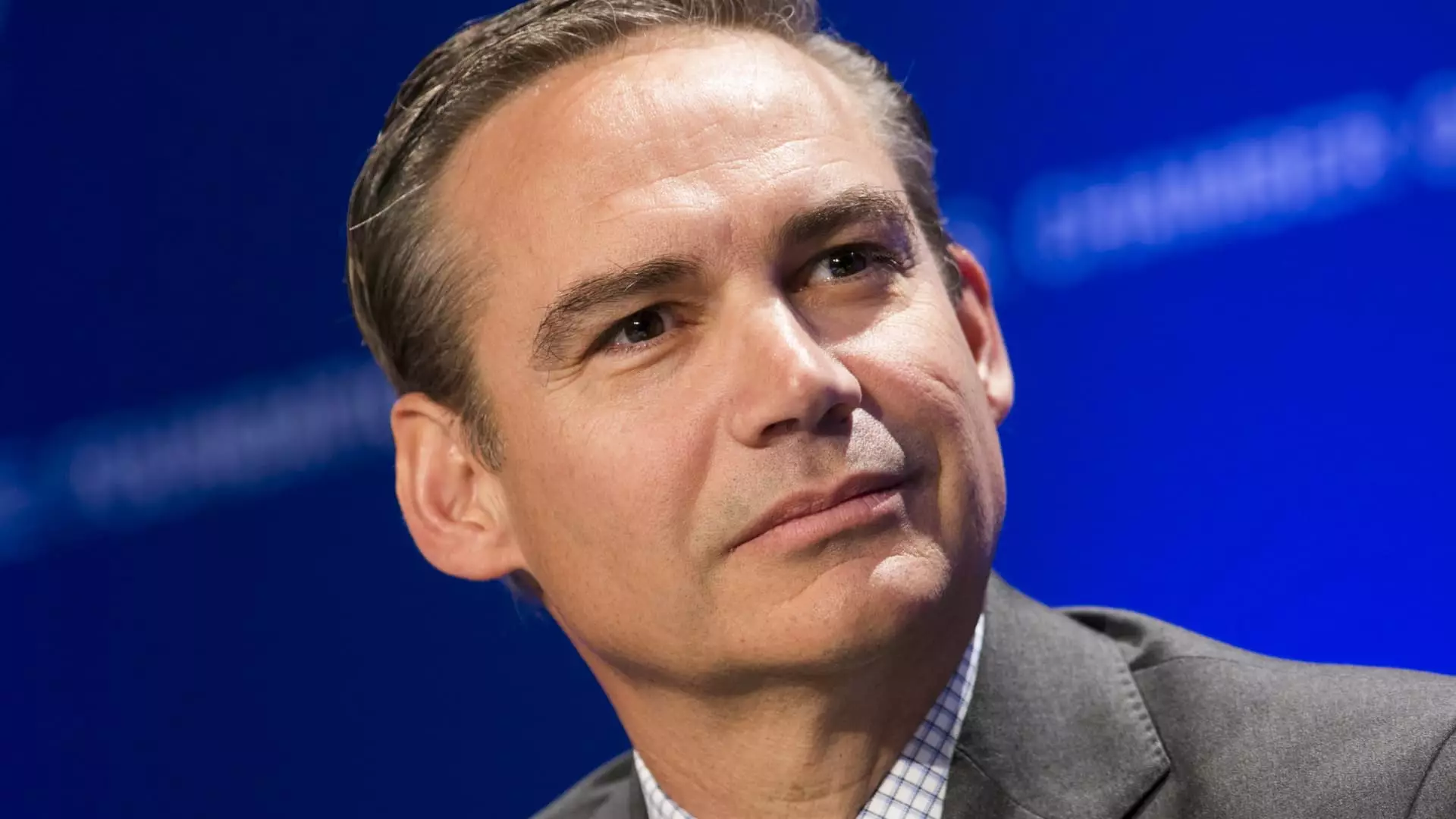Boeing, a titan in the aerospace industry, is grappling with a host of challenges that have significantly affected its financial health and operational stability. With Kelly Ortberg at the helm, the company is striving to shift the narrative from a streak of losses to one of recovery and growth. As the aircraft manufacturer faces its stakeholders, it must strike a delicate balance between addressing pressing concerns and painting a picture of optimism for the future.
Boeing’s recent announcement of an $11.83 billion annual loss underscores the gravity of its situation. This marks the company’s largest deficit since the tumultuous year of 2020, when the grounding of the 737 Max and the impact of the COVID-19 pandemic sent shockwaves through its operations. The latest quarter alone saw a loss of $3.86 billion, indicating a challenging environment exacerbated by a machinist strike that delayed production and deliveries. Revenue plummeted by 31%—a statistic that raises eyebrows and instills skepticism among investors and analysts alike.
Despite these difficulties, there are signs of a potential turnaround. Ortberg announced an expected increase in 737 Max deliveries, projecting a rise to the “upper 30s” in March from just 17 in December of the previous year. Although this might sound promising, the comparison to prior performance sheds light on a recovery that may be more of a crawl than a leap.
In the midst of financial turbulence, Ortberg emphasizes the importance of streamlining Boeing’s operations. “We are focused on stabilizing output, fixing the company’s culture, and refocusing on our main businesses,” he remarked in a recent staff memo. Such statements will resonate particularly well with stakeholders looking for assurance that the company is not merely treading water but actively engaging in fundamental changes.
Orthberg’s directive involves not only bolstering traditional aviation sectors but also revisiting areas that may no longer align with Boeing’s strategic objectives. This includes the potential shedding of non-core divisions, like the Jeppesen navigation unit. However, while these strategies may seem rational on paper, the skepticism remains regarding their execution and the time frame for visible results.
With shareholders uneasy and waiting for tangible improvements, Boeing’s share prices saw a brief uptick, rising 4% following Ortberg’s positive projections. This reaction may reflect a willingness among investors to cling to the notion of recovery, as the aviation market recovers post-pandemic. Still, lingering doubts remain over the efficacy of Boeing’s production increase in the face of previous delays and challenges in manufacturing standards.
While the company intends to reinstate production levels for craft like the 737 Max and launch test flights for the 777X, past incidents mar Boeing’s reputation. The midair blowout of a door panel earlier in 2022 serves as a stark reminder of the serious safety and quality checks that the company must navigate moving forward.
The ripples of Boeing’s operational issues also extend to its clients, who are grappling with altered schedules and delivery commitments. Major airlines, including American Airlines, have reported cutting routes and frequency due to ongoing delays associated with the Boeing 787 Dreamliner. In a similar vein, Ryanair’s CEO characterized the delivery delays as “frustrating,” indicating that these manufacturing setbacks could impede growth targets across the industry.
Boeing’s relationships with these airlines are critical. While airline executives may publicly voice their support for the company, the financial implications of logistical disruptions are real. Key partnerships depend on Boeing’s ability to meet commitments, affecting strategic deployments and configurations in an evolving market landscape where customer preferences are in flux.
As Kelly Ortberg prepares for an earnings call, the questions surrounding Boeing’s operational effectiveness, delivery schedules, and long-term viability will likely dominate discussions. For an aerospace giant that has been synonymous with innovation and leadership, these are not merely financial figures; they represent a moment of reckoning. Boeing must forge a path resilient enough to absorb the shocks from its history while remaining agile and forward-thinking to meet the evolving demands of the aviation sector.
In the competitive landscape of aerospace, the challenges facing Boeing are significant but not insurmountable. Trust must be rebuilt, objectives clarified, and performance metrics exceeded if the company hopes to emerge stronger from these turbulent times. While the road ahead may be fraught with challenges, the potential for recovery remains contingent upon decisive, informed actions that align with both current realities and future aspirations.

